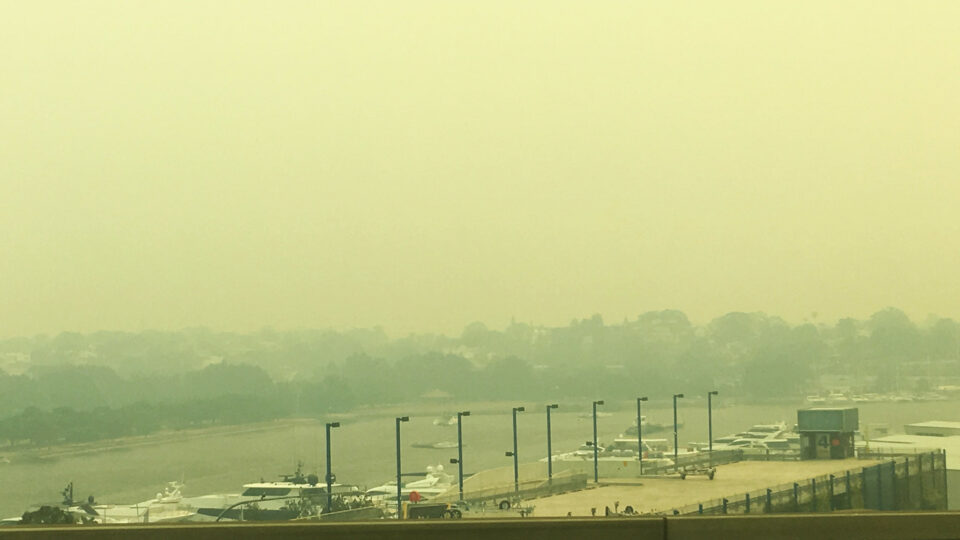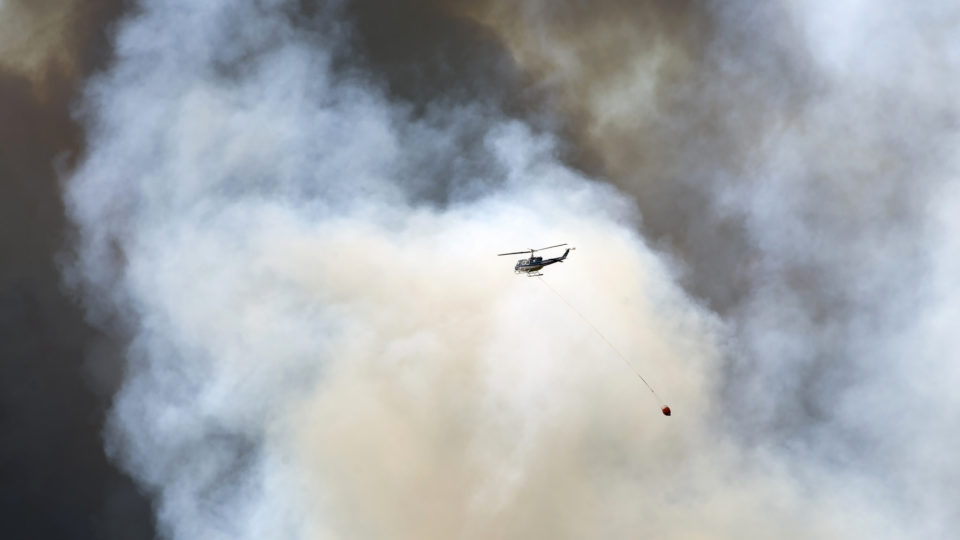Wildfires raging across Australia have devastated large swathes of land and prompted one of the largest evacuations in the country’s history. The fires, which have scorched approximately 20 million acres, have also killed 27 people and affected an estimated one billion animals at the time of this recording. The fire season, though still young, already ranks as among the worst in Australia’s recorded history.
Away from the flames, millions more in Australia are breathing unhealthy air as a result of the smoke from these wildfires. Wildfires release all sorts of dangerous air pollutants, like carbon monoxide and nitrous oxide. But wildfires also release fine particulate matter (more commonly referred to as PM2.5), which can be transported long distances. Breathing in these microscopic particles can lead to respiratory and cardiovascular problems. High levels of PM2.5 are particularly harmful to older people, young children, and those with weakened immune systems.
The Australian capital city of Canberra has been covered in a thick haze of smoke from nearby wildfires. Canberra recorded its worst air quality day on January 2nd, when levels of PM2.5 spiked to more than 200 micrograms per cubic meter during the worst hour.
Smoke has also been fouling Sydney’s air off and on for months, with PM2.5 readings hitting nearly 400 micrograms per cubic meter last month during the highest hour of pollution.
The U.S. EPA has in place an annual PM2.5 standard of 12 micrograms per cubic meter and a daily (or 24 hour) standard of 35.
According to the IPCC, southern Australia is expected to see increased risk of fire as the planet continues to warm. Regrettably, this could be the new normal.
**********
Web Links
Millions of Australians Are Choking on Smoke From Wildfires
Photo, posted December 5, 2019, courtesy of Flickr.
Earth Wise is a production of WAMC Northeast Public Radio.

